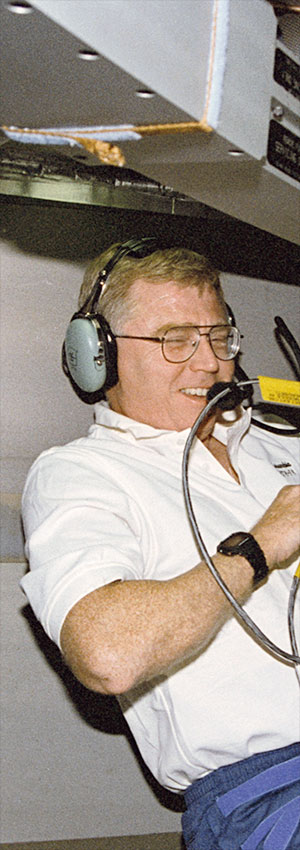 advertisements advertisements
|

|
STS-78 astronaut Charles Brady, 54, dies
July 27, 2006 — A retired NASA astronaut whose first and only spaceflight set a duration record for the space shuttle, has died. Captain Charles E. Brady, Jr. was 54 when he passed away on July 23.
Brady was selected as a NASA astronaut in 1992 as part of the space agency's 14th group of candidates. He filled various technical assignments while waiting for his first mission, including testing flight software for the orbiter as part of the Shuttle Avionics Integration Laboratory (SAIL).
On June 20, 1996, Brady launched with the STS-78 crew of six other astronauts aboard shuttle Columbia. Planned as a long duration mission dedicated to life science and microgravity experiments, the flight was seen a precursor to beginning research on the International Space Station.
A physician, Brady flew as a mission specialist taking part in medical experiments inside the Spacelab module located in Columbia's payload bay. Brady and his fellow crewmates' research included the first in-depth study of microgravity sleep and how it affected circadian rhythms.
During the eighth day of the flight, Brady carried an unlit Olympic Torch aloft as he rode a stationary bicycle in a tribute to the 1996 Olympics, which began in Atlanta, GA the day before the mission launched.
A ham radio enthusiast, Brady also took time during the mission to use the Shuttle Amateur Radio EXperiment (SAREX), to connect with middle school students living in Washington state.
Credited as among the "pioneers" of SAREX, Brady said in one ham radio contact from space that "he predicted that Amateur Radio would be a very important means for astronauts to feel as though they were in touch with the world while staying on-orbit for months on end — and so it is," reported the American Radio Relay League, which was the first to post the news on-line of Brady's passing.
On July 7, 1996, after 16 days, 21 hours, 48 minutes and 30 seconds in space, Brady and his crewmates landed at Kennedy Space Center in Florida, establishing the record for the longest shuttle mission to date, at that time. Their record was broken four months and two missions later by STS-80, which spent more than 17 days in orbit.
After logging over 405 hours in space, Brady continued at NASA, as deputy chief for shuttle astronaut training and then later as chief for space station astronaut training for the Mission Operations Division. He retired from NASA in August 2002.
Born on August 12, 1951, Brady considered Robbins, NC as his hometown. He received a doctorate in medicine from Duke University in 1975, having completed his pre- med at the University of North Carolina at Chapel Hill in 1971. Following college, Brady worked in sports medicine and family practice as the team physician for Iowa State University, the University of North Carolina at Chapel Hill and at East Carolina University in Greenville, NC.
In 1986, Brady joined the Navy, where he was trained as a flight surgeon, leading to his service aboard the aircraft carrier USS Ranger. In 1988, Brady was selected for the Navy's "Blue Angels" demonstration squadron, where he served as flight surgeon until 1990.
He was serving in Tactical Electronic Warfare Squadron 129 when selected for the astronaut program.
A resident of Oak Harbor, Washington, Brady is survived by his fiancée Susan, their four-year-old son and a sister. |
|

In orbit aboard space shuttle Columbia, astronaut Charles Brady, STS-78 mission specialist and a licensed ham radio operator, talks with students on Earth. (NASA) |
|

© collectSPACE. All rights reserved.
|
|

|

|
